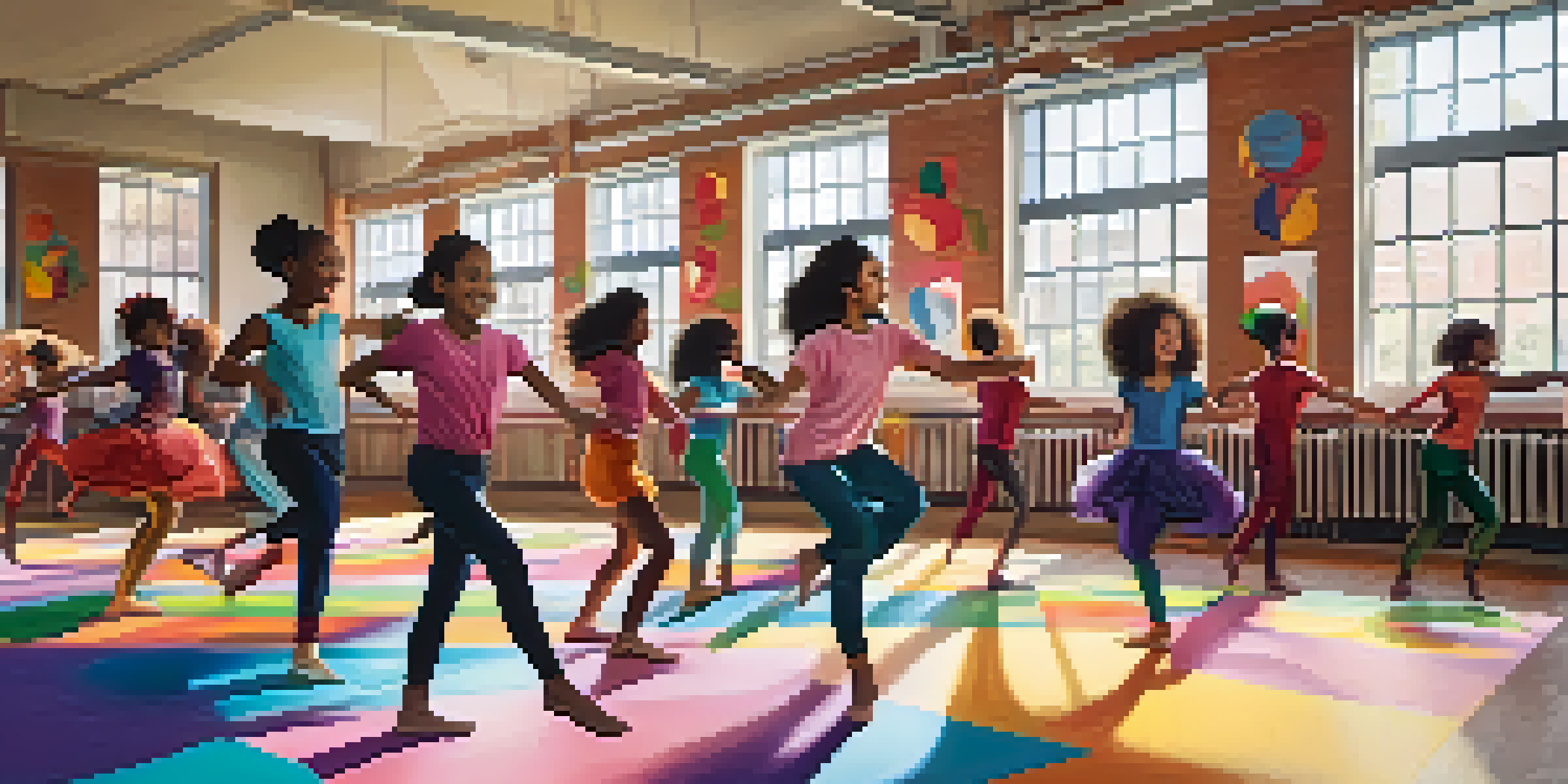The Impact of Dance Pedagogy on Student Engagement

Understanding Dance Pedagogy and Its Relevance
Dance pedagogy refers to the art and science of teaching dance, focusing on how students learn and engage with movement. It encompasses various methods and approaches that can be tailored to different learning styles and environments. By understanding these methods, educators can create a more dynamic and interactive learning space for their students.
The Role of Movement in Learning Engagement
Movement is a fundamental aspect of dance that significantly impacts student engagement. When students are physically active, they are more likely to retain information and stay focused during lessons. This connection between movement and learning highlights how incorporating dance can foster a more engaging educational experience.
Dance Enhances Learning Engagement
Incorporating movement in education helps students retain information and stay focused during lessons.
Creating a Collaborative Learning Environment
Dance pedagogy encourages collaboration among students, promoting teamwork and communication. When students work together on dance routines, they develop important social skills and build a sense of community. This collaborative environment not only enhances engagement but also encourages students to take ownership of their learning.
Fostering Creativity Through Dance Education
One of the most significant benefits of dance pedagogy is its ability to foster creativity. Dance allows students to express themselves in unique ways, encouraging them to think outside the box. This creative outlet can lead to increased motivation and enthusiasm for learning, ultimately enhancing student engagement.
Collaboration Boosts Social Skills
Dance pedagogy fosters teamwork and communication, enhancing student engagement and ownership of their learning.
Incorporating Technology in Dance Pedagogy
The integration of technology in dance pedagogy has opened up new avenues for engagement. Tools like video analysis and virtual classes allow students to explore dance in innovative ways. By incorporating technology, educators can create interactive lessons that cater to a diverse range of learning needs.
Addressing Different Learning Styles in Dance
Every student has a unique learning style, and dance pedagogy can accommodate these differences effectively. Visual learners may thrive in classes that emphasize choreography, while kinesthetic learners benefit from hands-on movement. By recognizing and incorporating various learning styles, educators can enhance overall student engagement.
Dance Fosters Creativity and Confidence
Through self-expression in dance, students develop creativity and emotional resilience, positively impacting their overall engagement.
The Emotional Benefits of Dance Education
Engaging in dance can have profound emotional benefits for students, helping them manage stress and develop confidence. As students learn to express their emotions through movement, they often become more resilient and self-aware. These emotional skills can translate into higher engagement levels in other academic areas.
Measuring the Impact of Dance on Engagement
Assessing the impact of dance pedagogy on student engagement can be done through various methods, such as surveys and observational studies. Educators can track participation levels, enthusiasm, and overall academic performance to gauge effectiveness. This data not only helps refine teaching methods but also underscores the importance of dance in educational settings.